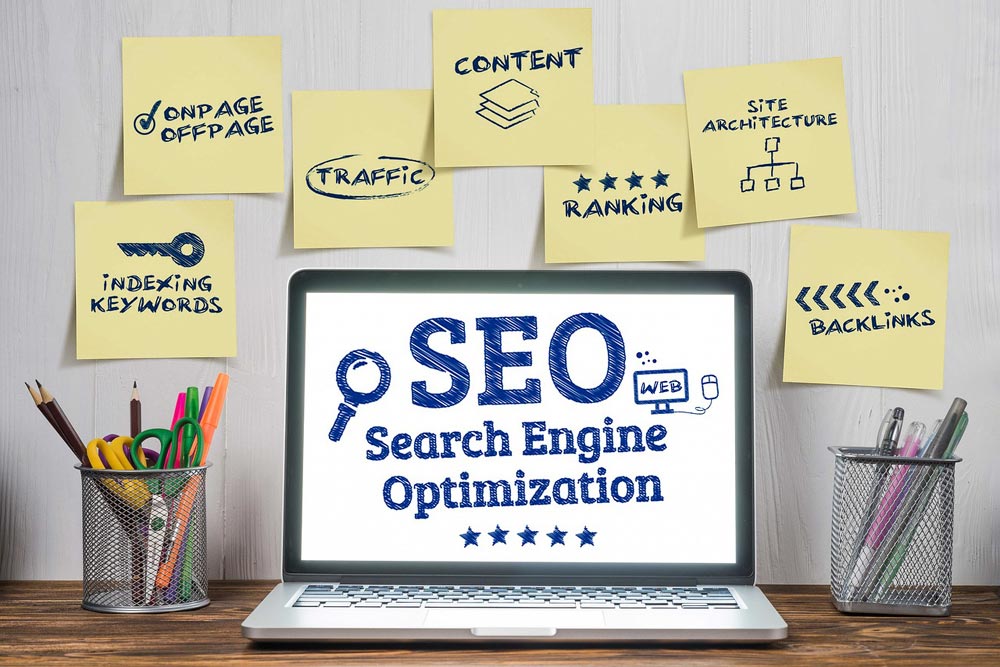In the ever-evolving landscape of affiliate marketing, crafting high-converting landing pages is the key to unlocking your full earning potential. These dedicated web pages act as the bridge between your audience and the products you promote, and their design plays a critical role in convincing visitors to take action.
Whether you’re a seasoned affiliate or just starting out, optimizing your landing pages can significantly boost your conversion rates and maximize your commissions. This guide will equip you with powerful strategies and actionable tips to transform your landing pages from traffic black holes into conversion powerhouses.
Also Read: Top 10 Affiliate Marketing Websites to Check in 2024 Explore now!
Get ready to dive deep into the essential elements of effective affiliate landing pages, learn how to craft compelling copy, leverage the power of visuals and social proof, and optimize for mobile users. We’ll also explore the crucial practice of A/B testing to ensure your landing pages are constantly evolving and delivering optimal results.
What is an Affiliate Marketing Landing Page?
An affiliate marketing landing page is a web page with a singular mission: to promote a specific product or service you’re partnered with. Unlike a general blog post that covers a broader topic, a landing page focuses solely on convincing the visitor to click your affiliate link and make a purchase. It’s a dedicated space free from distractions, designed to nurture a visitor’s interest and ultimately lead them to a conversion.
Also Read: Questions To Ask From Home Insurance Agent Explore now!
Tips to Optimize Your Landing Pages
Laser Focus on Relevance:
Alignment is key! Ensure your landing page content directly relates to the promoted product and the traffic source. Targeting the right audience with a message that resonates with their needs and interests increases conversion rates significantly. Imagine you’re promoting a fitness tracker. Traffic coming from a blog post about healthy living is more likely to convert than visitors from a website about car repairs.
Craft Compelling Headlines & Copy
First impressions matter! Write clear, concise headlines that grab attention and instantly communicate the value proposition. Think of your headline as a billboard – it needs to be clear, eye-catching, and entice visitors to delve deeper. Follow this with persuasive copy that highlights the product’s benefits and addresses potential customer pain points. Don’t just list features; tell a story! Explain how the product solves a problem, improves lives, or fulfills a desire. Weave a narrative that connects with your audience on an emotional level.
Also Read: How to Generate Plumbing Leads with Facebook Ads: Attract More Customers and Grow Your Business Explore now!
Embrace the Power of Visuals
High-quality visuals are no longer optional, they’re essential. Human brains process visuals much faster than text. So, include high-resolution product images, infographics, or even short explainer videos to capture attention, showcase the product in action, and break up text for easier consumption. Consider using lifestyle imagery that portrays the product being used in real-world scenarios. This helps potential customers envision themselves using and enjoying the product.
Build Trust with Social Proof
Testimonials, reviews, and trust badges are like magic ingredients for your landing page. They add credibility and social proof, influencing visitors to take action. Seeing positive experiences from others builds trust and reassures potential customers that they’re making a wise decision. Feature testimonials from people who resemble your target audience. This increases the relatability factor and makes the positive feedback even more impactful.
Optimize for SEO
While your landing page isn’t a traditional website page, search engine optimization (SEO) can still play a role. Don’t neglect to include relevant keywords naturally throughout the copy, including the headline, meta description, and image alt text. This can improve organic visibility and attract visitors who might be searching for the product you’re promoting.
Strategically Place Strong CTAs
Your call to action (CTA) is the moneymaker. Consider it the final push towards conversion. Use clear, action-oriented CTAs like “Buy Now,” “Get Your Exclusive Discount,” or “Add to Cart,” and place them prominently throughout the page, but especially above the fold (the visible portion of the page without scrolling). Don’t be afraid to experiment with CTA placement, design, and color to see what resonates best with your audience. A well-placed CTA button with compelling text can significantly increase conversions.
Engaging Visual Media
In today’s digital age, attention spans are shorter than ever. Text-heavy content can struggle to break through the noise and truly connect with viewers. That’s where the power of engaging visual media comes in. By incorporating captivating visuals into your affiliate marketing strategy, you can transform your landing pages from static information hubs into dynamic conversion machines.
Here’s why visual media is a game-changer for affiliate marketing:
- Increased Engagement: High-quality visuals grab attention instantly. Images, infographics, and videos can stop visitors in their tracks and entice them to delve deeper into your content.
- Enhanced Brand Storytelling: Visuals are powerful storytelling tools. Use them to showcase the product in action, highlight its benefits, and create an emotional connection with your audience. Imagine a captivating image of someone using a fitness tracker to achieve their goals – it speaks volumes more than just text.
- Improved Information Retention: People remember visuals far better than text. By incorporating charts, graphs, or product demonstrations, you can make complex information easier to understand and leave a lasting impression.
Now, let’s explore some specific types of visual media to elevate your affiliate marketing game:
- High-Quality Product Images: This is a no-brainer. Feature clear, crisp product images from multiple angles. Showcase the product in use and highlight its key features. Consider using lifestyle imagery to depict the product seamlessly integrated into everyday life.
- Informative Infographics & Charts: Infographics condense complex information into visually appealing and digestible formats. Use them to highlight product features, compare different options, or showcase data-driven results.
- Compelling Explainer Videos: Short, engaging videos can be incredibly effective. Demonstrate the product’s functionality, showcase customer testimonials, or create explainer videos that address common pain points.
- User-Generated Content (UGC): Leverage the power of authenticity! Feature real user photos or short videos showcasing how they use and love the product. UGC builds trust and social proof, influencing viewers to consider your recommendations.
Find the Right Design Tools
Building a high-converting affiliate marketing landing page doesn’t have to involve mountains of code or expensive design agencies. Today, a wealth of design tools empower marketers of all skill levels to create stunning and effective landing pages. But with so many options, choosing the right one can feel overwhelming. Fear not, affiliate warrior! Let’s explore some popular tools to help you find the perfect fit for building your conversion champion:
Free and User-Friendly Options:
Canva: The Creative King for Beginners: Canva reigns supreme for its user-friendliness. With its intuitive drag-and-drop interface and vast library of free templates, images, and graphics, Canva lets you build professional-looking landing pages even without design experience. It’s ideal for crafting visually appealing layouts and incorporating basic design elements to get your message across effectively.
Google Sites: The Simple Setup for Straightforward Pages: While not as feature-rich as some dedicated landing page builders, Google Sites offers a surprisingly user-friendly option, especially for those already familiar with Google products. It provides basic building blocks like text boxes, images, and layouts, allowing you to create clean and functional landing pages. It’s a good choice for crafting a quick landing page with minimal fuss, especially if you plan to host it on a Google domain.
Paid Options for Conversion-Focused Features:
Leadpages: The Conversion Crusader: A favorite amongst affiliate marketers, Leadpages boasts a user-friendly interface specifically designed for building high-converting landing pages. It offers a wider selection of conversion-focused templates compared to free options, along with drag-and-drop functionality and A/B testing capabilities. This allows you to easily customize pre-designed templates with your branding and test different elements to optimize performance.
Lander: The Landing Page Laboratory: Lander focuses on providing a streamlined landing page creation experience. Its interface is clean and intuitive, perfect for those who value simplicity and speed. Lander offers a good selection of templates and conversion-centric features like pop-ups and integrations with email marketing platforms. This makes it a strong option for marketers who want to focus on creating multiple, targeted landing pages for different campaigns.
Choosing Your Perfect Tool:
Consider your technical expertise, budget, and desired features when making your choice. If you’re a beginner, start with free options like Canva or Google Sites to get your feet wet. As you gain experience and your affiliate marketing efforts evolve, consider paid options like Leadpages or Lander for their advanced functionalities and conversion optimization tools.
Remember, the best tool is the one that empowers you to create a visually appealing, user-friendly landing page that effectively communicates your message and drives conversions. So, experiment, explore these options, and find the perfect fit to build your affiliate marketing empire!
A/B Test Like a Champion
Don’t settle for assumptions! A/B testing allows you to compare different versions of your landing page elements (headlines, CTAs, visuals, copy) and see which ones convert better. This data-driven approach helps you continuously refine your landing page for maximum conversions. Imagine you have two different headlines for your landing page. With A/B testing, you can show each version to a portion of your traffic and see which one generates more clicks and ultimately, more sales.
By implementing these optimization strategies, you can transform your affiliate marketing landing pages from traffic black holes to conversion powerhouses. Remember, crafting a successful landing page requires focus, clear communication, and a user-centric approach. Provide value to your visitors, address their needs, and guide them seamlessly towards conversion.







